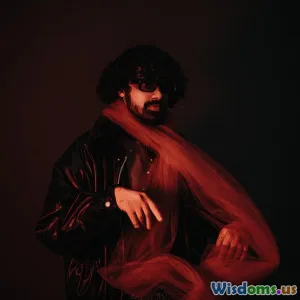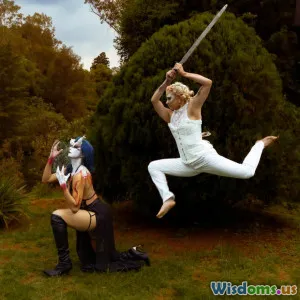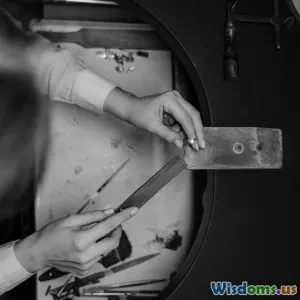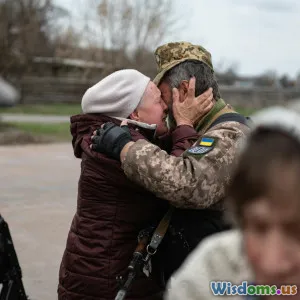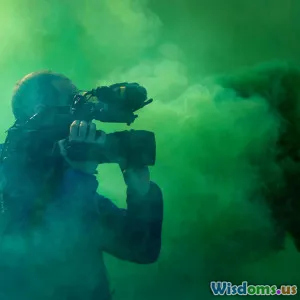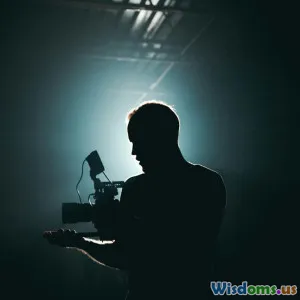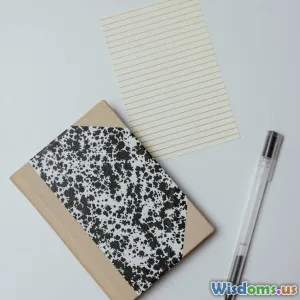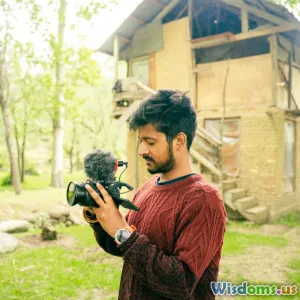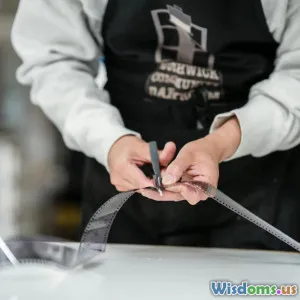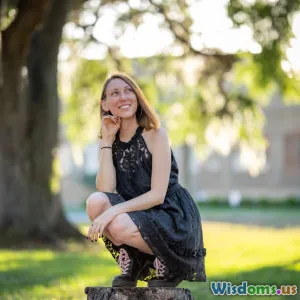
Film Editing Techniques for Documentaries
8 min read Unlock the art of documentary storytelling with expert film editing techniques that engage and inspire audiences. (0 Reviews)
Film Editing Techniques for Documentaries: Crafting Compelling Stories
Introduction
Documentaries are windows into reality, serving as powerful vessels that inform, inspire, and move audiences by depicting real-world stories. Yet, raw footage alone is rarely enough to captivate viewers — it’s the artful craft of film editing that shapes disorganized clips into compelling narratives crowned with emotional resonance. Documentaries rely heavily on editing to transform fragments of life and facts into meaningful journeys. But what exactly goes into this vital phase of filmmaking?
In this article, we'll delve deep into the essential film editing techniques that documentary editors use to sculpt authentic stories. From pacing to emotional rhythms, continuity, and dramatization, we'll unpack how editors breathe life into reality.
Understanding the Role of Editing in Documentary Filmmaking
Unlike fictional films, documentaries capture reality as it unfolds, often resulting in hours—sometimes hundreds of hours—of unstructured footage. The editor’s role then transcends mere assembly: it's about narrative construction, thematic development, and audience engagement without scripted scenes.
Editing in documentaries involves making narrative decisions based on interview content, archival footage, B-roll, voiceovers, sound design, and more. Legendary editor Thelma Schoonmaker asserts, “Editing is a process of discovery, a matter of solving problems and letting the story tell itself.” In this exploratory spirit, editors curate the essence of truth.
Key Film Editing Techniques for Documentaries
1. Selective Storytelling: Distilling Hours into Moments
The first challenge is sifting through extensive raw footage. The technique of selective storytelling demands identifying potent, revealing, or emotionally charged clips. Editors listen keenly for moments that align with the documentary’s core message, discarding superfluous or repetitive content.
Example: In the critically acclaimed documentary Hoop Dreams (1994), editors meticulously selected interviews and game footage to weave the multi-year journey of two aspiring basketball players into a cohesive and intimate story, focusing on moments that revealed character growth.
2. Pacing and Rhythm: Balancing Tension and Relief
Maintaining viewer engagement requires dynamic pacing—the tempo at which scenes unfold. Editors control pacing by manipulating clip lengths, cutting rhythm, and transitions.
Faster cuts can heighten tension or urgency, while slower cuts allow for emotional reflection or the gravity of a topic. Alternating these rhythms helps avoid monotony and guides the emotional journey.
True documentary editor Susan Korda highlights this balancing act: "The rhythm must reflect the heartbeat of the story—sometimes that means a heartbeat racing; sometimes a steady calm."
3. Establishing Continuity Despite Non-linear Footage
Because documentary footage often comes from various times and sources, editors face the challenge of creating smooth, logical progression. Continuity editing techniques—such as match cuts linking actions, consistent visual cues, and temporal markers—ensure the audience can follow the narrative without confusion.
For instance, in The Thin Blue Line (1988), editor Emily Crowley uses reenactments and interviews, skillfully intercut to reconstruct the timeline in a comprehensible and engaging sequence.
4. Emotional Structuring: Evoking Empathy Through Juxtaposition
Editing plays a crucial role in shaping audience emotions. One method involves juxtaposition—placing contrasting scenes side by side to trigger empathy, provoke thought, or highlight injustice.
Take Born into Brothels (2004), which alternates harsh reality with moments of hope and beauty, guiding viewers to feel the complexity of lives portrayed.
5. Use of Montage: Conveying Ideas Efficiently
Montage sequences—series of short shots edited rapidly—serve to condense information, demonstrate progression, or reinforce themes without lengthy exposition. This helps maintain narrative momentum and visually illustrates concepts or timelines.
The classic example is in An Inconvenient Truth (2006), which uses montages of melting glaciers and polluted cities alongside scientific facts, underscoring environmental urgency.
6. Sound Design and Syncing: Amplifying Narrative Impact
The integration of sound is pivotal in documentaries. Editors synchronize audio with visuals, layer sound effects, ambient noises, and music to complement the mood and meaning.
Sound editor Diane Becker’s work on Won't You Be My Neighbor? (2018) demonstrates how manipulating audio cues—like the familiar melody of Mister Rogers’ theme—evokes nostalgia and warmth, strengthening the viewer’s bond with the subject.
7. Voiceover Integration: Guiding the Audience
Voiceovers act as narrative signposts, orienting audience understanding or filling in background information. Editors carefully time voiceovers so they don’t overpower visuals but instead illuminate context.
For example, Ken Burns’ historical documentaries famously rely on voiceover readings of letters or historical texts, matched with evocative imagery, to maintain narrative clarity.
8. Ethical Editing: Preserving Authenticity and Fairness
Editing documentaries demands strict adherence to ethical standards. Since the footage represents real people and events, editors must avoid manipulative cuts or misleading juxtapositions.
Film professor Bill Nichols stresses, "The power of editing must not override the obligation to truth." Responsible editing ensures the documentary informs without distortion.
Tools and Technologies Shaping Modern Documentary Editing
Advancements in digital editing software such as Adobe Premiere Pro, Final Cut Pro, and DaVinci Resolve have revolutionized documentary editing, offering intuitive timelines, multi-camera syncing, and audio enhancement.
Moreover, cloud collaboration platforms now enable distributed editorial teams to access, review, and amend projects in real time, accelerating the iterative refinement process necessary in complex documentaries.
Statista (2023) reports a 35% rise in documentary productions globally, with editors leveraging these tools to meet growing content demands while pushing creative boundaries.
Conclusion: The Editor as a Storyteller and Truth-Guardian
Film editing in documentaries is far more than technical assembly—it’s editing with purpose and passion. Through selective storytelling, pacing mastery, emotional calibration, and ethical mindfulness, editors sculpt real-life footage into narratives that educate, provoke thought, and inspire change.
Aspiring documentary editors should not only hone technical skills but also deepen their understanding of narrative structure, ethics, and audience psychology. As Thelma Schoonmaker’s insight reminds us, editing is discovery; it’s where the heart of a documentary beats and the truth resonates.
By embracing these film editing techniques, documentary storytellers can transcend raw footage limitations and create enduring works that reverberate in the minds and hearts of audiences worldwide.
Rate the Post
User Reviews
Popular Posts










